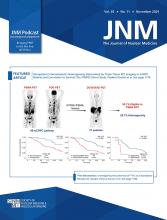Visual Abstract
Abstract
The clinical impact of 16α-18F-fluoro-17β-estradiol (18F-FES) PET/CT on patient management has not been well investigated. The aim of this study was to assess the clinical impact of 18F-FES PET/CT on the management of patients with recurrent or metastatic breast cancer. Methods: Study subjects were identified retrospectively from a database of a prospective trial for postmarketing surveillance of 18F-FES between 2021 and 2023. Patients who were suspected or known to have recurrent or metastatic estrogen receptor–positive breast cancer based on a routine standard workup were included. Planned management before and actual management after 18F-FES PET/CT were assessed by 2 experienced medical oncologists via medical chart review. A 5-point questionnaire was provided to evaluate the value of 18F-FES PET/CT for management planning. The rate of intention-to-treat and interdisciplinary changes, and the impact of 18F-FES PET/CT according to PET/CT result or clinical indication, were examined. Results: Of the 344 included patients, 120 (35%) experienced a change in management after 18F-FES PET/CT. In 139 (40%) patients,18F-FES PET/CT supported the existing management decision without a change in management. Intention-to-treat and interdisciplinary changes accounted for 64% (77/120) and 68% (82/120) of all changes, respectively. A higher rate of change was observed when lesions were 18F-FES–negative (44% [36/81]) than 18F-FES–positive (30% [51/172]) or mixed 18F-FES–positive/negative (36% [33/91]). Regarding clinical indications, the highest rate of change was shown when evaluating the origins of metastasis of double primary cancers (64% [9/14]). Conclusion: 18F-FES PET/CT modified the management of recurrent or metastatic breast cancer, serving as an impactful imaging modality in clinical practice.
Footnotes
Published online Oct. 3, 2024.
- © 2024 by the Society of Nuclear Medicine and Molecular Imaging.
This article requires a subscription to view the full text. If you have a subscription you may use the login form below to view the article. Access to this article can also be purchased.
SNMMI members
Login to the site using your SNMMI member credentials
Individuals
Login as an individual user








